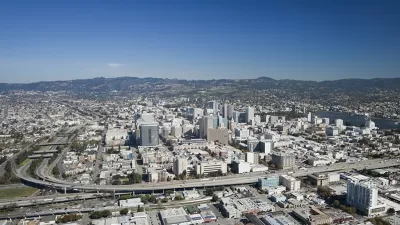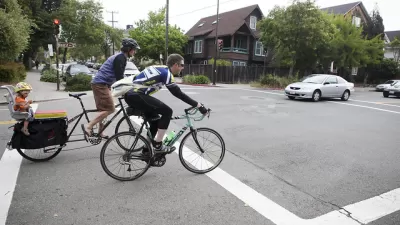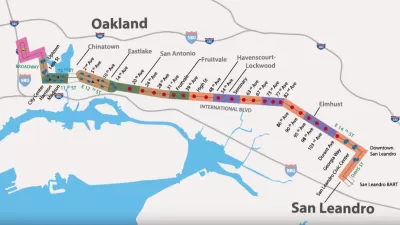Lauren Markham examines the value of community gardens to the bottom lines of developers—because one person's blighted back yard can easily become another person's veggie garden marketing pitch.
According to a recent article in The New Yorker, "for house buyers, these community gardens simply have aesthetic appeal, contributing to a kind of rustic, down-home vibe that makes nearby real estate more attractive. And it hasn’t taken long for real-estate agents and developers to take advantage of that commercial potential."
The article cites examples in the East Bay in Northern California, where low income neighborhoods have doubled as bohemian enclaves for decades, but new market pressures due to the region's booming tech economy are pushing low income residents out. "The 'blighted' lots suitable for urban agriculture are often found in lower-income neighborhoods like NOBE, as well as in post-industrial neighborhoods like West Oakland and West Berkeley. These also happen to be neighborhoods that developers see as ripe for construction."
In these cases, what began as a well-intentioned public health benefit, can transition into a signifier for gentrification. "Many community gardens are started with the intention of supporting lower-income communities, Tiny Gray Garcia, an activist and journalist, said. But once they are built, she added, 'the real-estate companies come in and start to reassess the land and use the property value to displace poor people of color. The community-gardening people may be well meaning, but they don’t always understand that they’re pawns in the game.'"
FULL STORY: Gentrification and the Urban Garden

Planetizen Federal Action Tracker
A weekly monitor of how Trump’s orders and actions are impacting planners and planning in America.

Maui's Vacation Rental Debate Turns Ugly
Verbal attacks, misinformation campaigns and fistfights plague a high-stakes debate to convert thousands of vacation rentals into long-term housing.

San Francisco Suspends Traffic Calming Amidst Record Deaths
Citing “a challenging fiscal landscape,” the city will cease the program on the heels of 42 traffic deaths, including 24 pedestrians.

Defunct Pittsburgh Power Plant to Become Residential Tower
A decommissioned steam heat plant will be redeveloped into almost 100 affordable housing units.

Trump Prompts Restructuring of Transportation Research Board in “Unprecedented Overreach”
The TRB has eliminated more than half of its committees including those focused on climate, equity, and cities.

Amtrak Rolls Out New Orleans to Alabama “Mardi Gras” Train
The new service will operate morning and evening departures between Mobile and New Orleans.
Urban Design for Planners 1: Software Tools
This six-course series explores essential urban design concepts using open source software and equips planners with the tools they need to participate fully in the urban design process.
Planning for Universal Design
Learn the tools for implementing Universal Design in planning regulations.
Heyer Gruel & Associates PA
JM Goldson LLC
Custer County Colorado
City of Camden Redevelopment Agency
City of Astoria
Transportation Research & Education Center (TREC) at Portland State University
Jefferson Parish Government
Camden Redevelopment Agency
City of Claremont





























